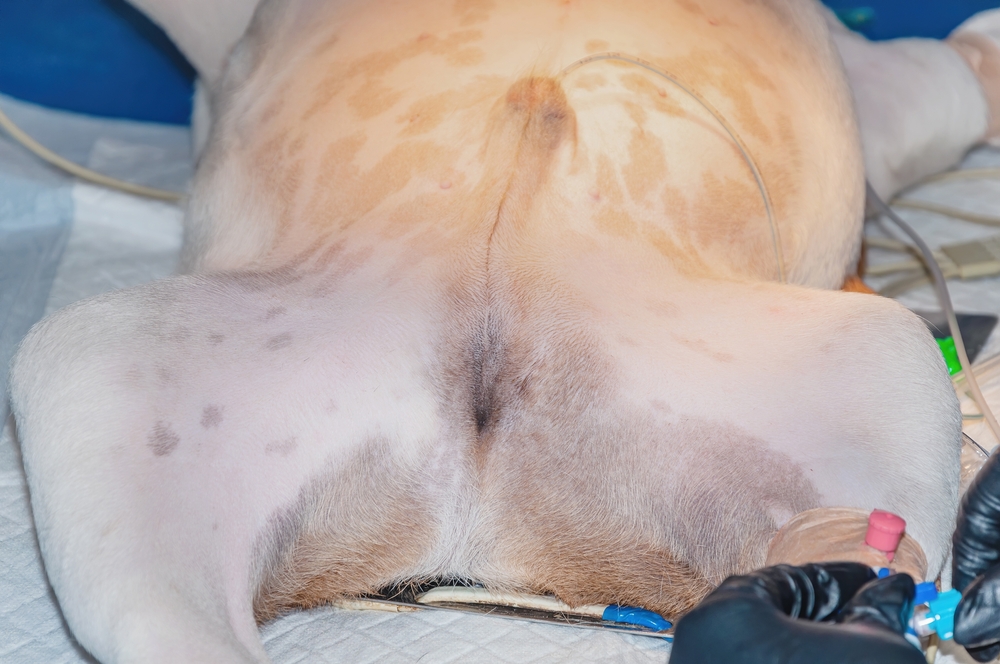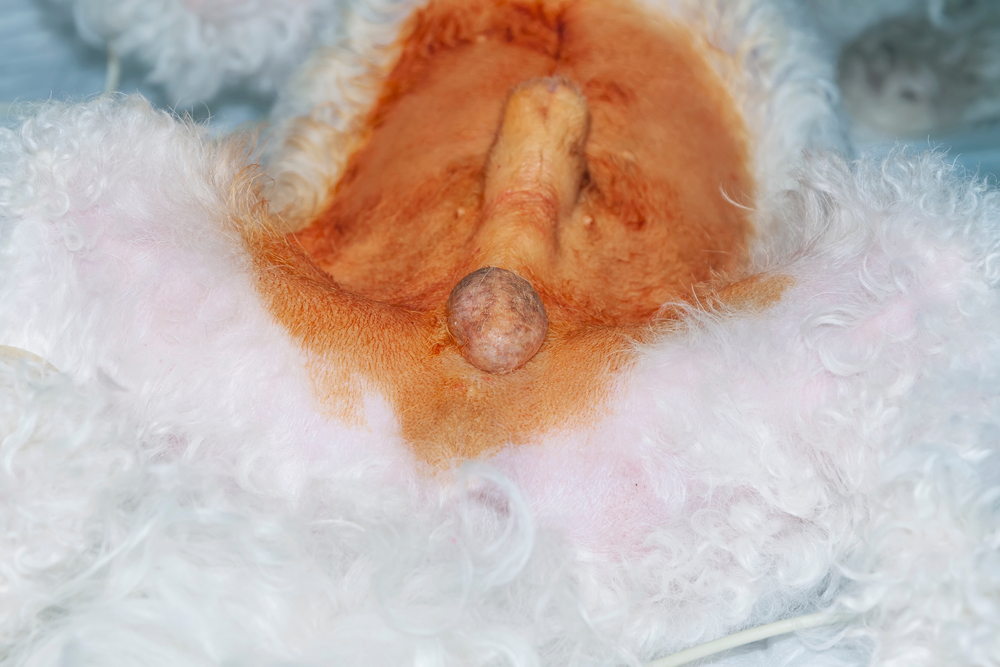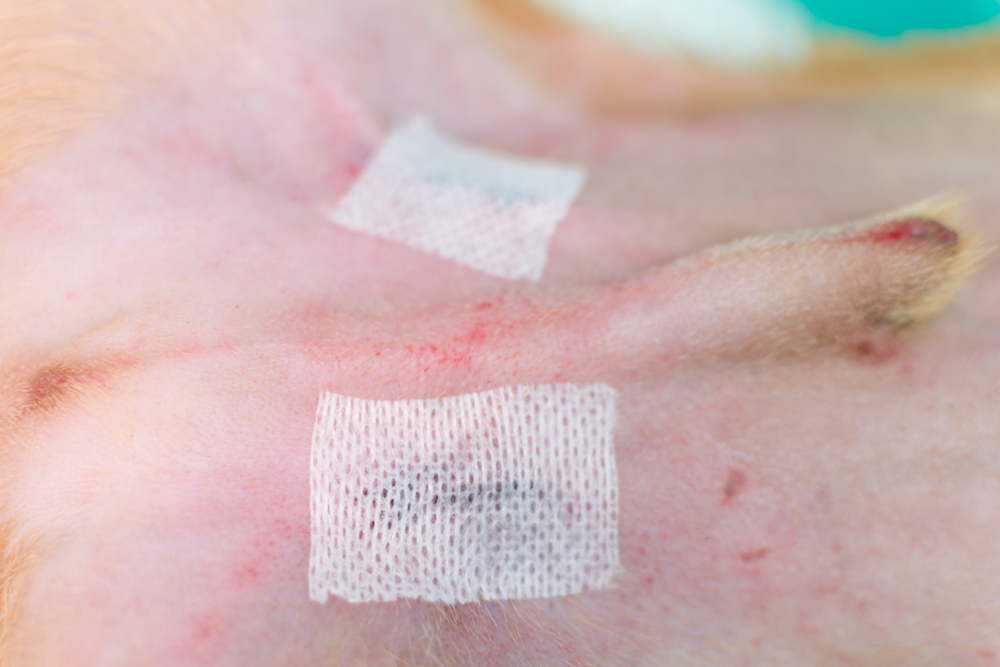Is It a Drawback? Our Vet Solutions – Dogster
In case your canine solely has one descended testicle, it might point out a situation known as cryptorchidism. The opposite testicle is probably going retained in his stomach or within the inguinal canal. Cryptorchidism may be problematic because it places a canine in danger for growing a spermatic wire torsion or testicular most cancers. Let’s study extra about what it means for a canine to solely have one testicle and if it’s a downside.


What Is Cryptorchidism?
Cryptorchidism, which accurately means “hidden testicle”, is a situation the place one or each testicles fail to descend right into a canine’s scrotum.
Usually, testicles descend or “drop” into the scrotum by 6 to 16 weeks of age in puppies.1 The testes develop behind the kidneys within the stomach whereas a pet remains to be within the womb. Every testicle is hooked up to a ligament known as the gubernaculum. The top of this ligament is hooked up to the scrotum. Because the ligament shrinks, it pulls the testicle by the inguinal canal (the passage within the decrease belly wall, situated simply above the groin) and into the scrotum. In cryptorchidism, one or each testicles are retained inside a canine’s stomach or inguinal canal.


What Causes a Canine to Develop Cryptorchidism?
Cryptorchidism is inherited. It’s due to this fact necessary to not breed males with this situation. Though any breed of canine can have cryptorchidism, some breeds are at larger danger.
Based on VCA Hospitals, the toy breeds, together with Toy Poodles, Pomeranians, and Yorkshire Terriers, usually tend to have undescended testicles.2
What Are the Indicators of Cryptorchidism?
Canines with cryptorchidism often don’t present any indicators aside from the presence of just one testicle within the scrotum or no testicles in any respect. The situation will not be painful and doesn’t make a canine really feel sick until problems come up.
Is your canine presenting any of those indicators? We recommend you communicate with a vet on-line.
💛 🐶 Communicate To a Vet On-line From the Consolation of Your Sofa!


If it is advisable to communicate with a vet however can’t get to at least one, head over to PangoVet. It’s an internet service the place you may speak to a vet on-line and get the personalised recommendation you want on your pet — all at an reasonably priced worth!
What Issues Are Related to Cryptorchidism?
There are two problems related to cryptorchid testicles – spermatic wire torsion and testicular most cancers.
In spermatic wire torsion, the spermatic wire, which offers blood movement to the testicle, turns into twisted. This twisting can reduce off blood movement to the testicle, resulting in extreme ache and swelling. The one remedy is emergency surgical procedure to neuter the canine. Fortuitously, spermatic wire torsion is uncommon in canines.
Older canines with cryptorchidism are prone to growing testicular most cancers of the retained testicle. Cryptorchid canines are estimated to be 13 occasions extra more likely to develop testicular most cancers than regular canines. Some canines don’t present apparent indicators of testicular most cancers, but when they do, the indicators depend upon the kind of most cancers current.
Testicular tumors of the retained testicle are usually identified submit surgical procedure when sections of the tumor are despatched to the lab for histopathology, the place a veterinary pathologist examines the tissue below a microscope. One of the simplest ways to forestall testicular most cancers from occurring in a cryptorchid canine. is to neuter the canine whereas it’s nonetheless younger.


Are Canines with Cryptorchidism Sterile?
This relies on whether or not only one or each testicles are regained. The undescended testicle will not be capable of produce sperm because of the increased temperature contained in the physique. The retained testicle can be often smaller than the scrotal testicle. If each testicles are retained, the canine will likely be sterile, whereas canines with one cryptorchid testicle are nonetheless fertile with the testicle within the scrotum producing sperm.
What Is the Therapy for Cryptorchidism?
Castration (often known as neutering) is the one remedy for this situation. Castration entails surgically eradicating each testicles whereas the canine is below basic anesthetic. Usually of cryptorchidism, the retained testicle is situated within the stomach or the inguinal canal. It’s additionally doable for the testicle to be situated below the pores and skin within the groin space.
Cryptorchid canines ought to be neutered early to keep away from life-threatening situations, equivalent to testicular most cancers and spermatic wire torsion, from growing.
What Is the Prognosis for Cryptorchidism?
The prognosis for cryptorchidism is superb supplied that the canine is neutered early earlier than issues develop within the retained testicle.




Conclusion
In case your canine solely has one testicle, he most likely has cryptorchidism, a situation the place one or each testicles fail to descend right into a canine’s scrotum. Cryptorchidism places a canine in danger for growing spermatic wire torsion or testicular most cancers. Canines with this situation ought to due to this fact be neutered early to cut back the chance of issues occurring.
Featured Picture Credit score: Phatara, Shutterstock

